San Buenaventura (ventura), California, Hgh State Clinic, Hgh Injections, Hrt Doctors
San Buenaventura Ventura, California Blood Testing Facilities
 Represents a LabCorp blood testing facility
Represents a LabCorp blood testing facility Represents a Quest Diagnostics blood testing facility
Represents a Quest Diagnostics blood testing facility

Nearby Labcorp Blood Testing facilities:
- Labcorp Center Distance: 1 m, 2955 Loma Vista Rd, Ventura, Ventura County, CA, 93003
- Labcorp Center Distance: 5 m, 300 South A St 103, Oxnard, Ventura County, CA, 93030
- Labcorp Center Distance: 19 m, 558 N. Ventu Park Rd. Suite C, Newbury Park, Ventura County, CA, 91320
- Labcorp Center Distance: 20 m, 865 Patriot Drive Suite 101, Moorpark, Ventura County, CA, 93021
- Labcorp Center Distance: 21 m, 425 Haaland Dr. Ste 106, Thousand Oaks, Ventura County, CA, 91361
- Labcorp Center Distance: 25 m, 2655 First St. Suite 340, Simi Valley, Ventura County, CA, 93065
- Labcorp Center Distance: 29 m, 28240 Agoura Road Suite 204, Agoura Hills, Los Angeles County, CA, 91301
- Labcorp Center Distance: 34 m, 7301 Medical Center Dr Ste 304, West Hills, Los Angeles County, CA, 91307
- Labcorp Center Distance: 38 m, 27420 Tourney Rd. Suite 140, Valencia, Los Angeles County, CA, 91355
- Labcorp Center Distance: 39 m, 23823 Valencia Blvd. Suite 150, Valencia, Los Angeles County, CA, 91355
- Labcorp Center Distance: 40 m, 18399 Ventura Blvd. Suite 17, Tarzana, Los Angeles County, CA, 91356
- Labcorp Center Distance: 44 m, 15211 Vanowen St Ste 319, Van Nuys, Los Angeles County, CA, 91405
- Labcorp Center Distance: 45 m, 1821 Wilshire Blvd. Ste 210, Santa Monica, Los Angeles County, CA, 90403
- Labcorp Center Distance: 47 m, 10921 Wilshire Blve. Suite 701, Los Angeles, Los Angeles County, CA, 90024
- Labcorp Center Distance: 49 m, 465 N Roxbury Dr Ste 715, Beverly Hills, Los Angeles County, CA, 90210
- Labcorp Center Distance: 50 m, 8737 Beverly Blvd Ste 401, Los Angeles, Los Angeles County, CA, 90048
- Labcorp Center Distance: 51 m, 2701 W Alameda Ave Ste 203, Burbank, Los Angeles County, CA, 91505
- Labcorp Center Distance: 52 m, 8540 S Sepulveda Blvd Ste 107, Westchester, Los Angeles County, CA, 90045
- Labcorp Center Distance: 55 m, 501 E Hardy St. Suite 150, Inglewood, Los Angeles County, CA, 90301
- Labcorp Center Distance: 56 m, 510 N. Prospect Ave. Suite 305, Redondo Beach, Los Angeles County, CA, 90277
- Labcorp Center Distance: 57 m, 1400 S Grand Ave Ste 612, Los Angeles, Los Angeles County, CA, 90015
- Labcorp Center Distance: 58 m, 4201 Torrance Blvd Ste 240, Torrance, Los Angeles County, CA, 90503
- Labcorp Center Distance: 59 m, 3500 Lomita Blvd. Suite 102, Torrance, Los Angeles County, CA, 90505
- Labcorp Center Distance: 60 m, 550 Deep Valley Dr. Suite 317, Palos Verdes Estates, Los Angeles County, CA, 90274
- Labcorp Center Distance: 62 m, 50 Alessandro Pl. Suite A10, Pasadena, Los Angeles County, CA, 91105
- Labcorp Center Distance: 63 m, 960 E Green St Suite 290, Pasadena, Los Angeles County, CA, 91106
- Labcorp Center Distance: 64 m, 1360 W 6Th St Ste 190, San Pedro, Los Angeles County, CA, 90732
- Labcorp Center Distance: 65 m, 330 W. Las Tunas Dr. Ste 2, San Gabriel, Los Angeles County, CA, 91776
- Labcorp Center Distance: 66 m, 433 N. 4Th Street Suite 201, Montebello, Los Angeles County, CA, 90640
- Labcorp Center Distance: 67 m, 2690 Pacific Ave. Suite 330, Long Beach, Los Angeles County, CA, 90806
- Labcorp Center Distance: 68 m, 44725 10Th St West Suite 240, Lancaster, Los Angeles County, CA, 93534
- Labcorp Center Distance: 70 m, 38209 47Th St East Suite C, Palmdale, Los Angeles County, CA, 93552
- Labcorp Center Distance: 73 m, 10861 Cherry St. Suite 200, Los Alamitos, Orange County, CA, 90720
- Labcorp Center Distance: 74 m, 1190 Pacific Coast Hwy Ste C, Seal Beach, Orange County, CA, 90740
- Labcorp Center Distance: 75 m, 10601 Walker St. Suite 250, Cypress, Orange County, CA, 90630
- Labcorp Center Distance: 76 m, 3400 W. Ball Road Ste 104, Anaheim, Orange County, CA, 92804
- Labcorp Center Distance: 77 m, 420 W. Rowland Street, Covina, Los Angeles County, CA, 91722
- Labcorp Center Distance: 78 m, 1145 East Clark Ave Suite B, Santa Maria, Santa Barbara County, CA, 93455
- Labcorp Center Distance: 80 m, 1335 Cypress Ave. Suite 101, San Dimas, Los Angeles County, CA, 91773
- Labcorp Center Distance: 81 m, 210 S. Palisade Dr. Suite 202A, Santa Maria, Santa Barbara County, CA, 93454
- Labcorp Center Distance: 82 m, 12665 Garden Grove Bl. Ste 212, Garden Grove, Orange County, CA, 92843
- Labcorp Center Distance: 83 m, 1201 N. Rose Dr. Suite 202, Placentia, Orange County, CA, 92870
- Labcorp Center Distance: 85 m, 705 W La Veta Ave Ste 102, Orange, Orange County, CA, 92868
- Labcorp Center Distance: 86 m, 1501 Superior Ave. Ste 209, Newport Beach, Orange County, CA, 92663
- Labcorp Center Distance: 87 m, 100 N. Tustin Avenue, Tustin, Orange County, CA, 92780
- Labcorp Center Distance: 88 m, 500 S Anaheim Hills Rd Ste102, Anaheim, Orange County, CA, 92807
- Labcorp Center Distance: 89 m, 12555 Central Ave. Ste Af, Chino, San Bernardino County, CA, 91710
- Labcorp Center Distance: 90 m, 400 Newport Center Dr Ste 202, Newport Beach, Orange County, CA, 92660
- Labcorp Center Distance: 91 m, 1310 San Bernardino Rd Ste 107, Upland, San Bernardino County, CA, 91786
- Labcorp Center Distance: 92 m, 8283 Grove Ave Ste 109, Rancho Cucamonga, San Bernardino County, CA, 91730
- Labcorp Center Distance: 93 m, 113 Waterworks Way Suite 160, Irvine, Orange County, CA, 92618
Nearby Quest Blood Testing facilities:
- Quest Center Distance: 10 m, 500 Paseo Camarillo, Camarillo, Ventura County, CA, 93010-5900
- Quest Center Distance: 24 m, 1220 La Venta Dr., Westlake Village, Ventura County, CA, 91361-3749
- Quest Center Distance: 27 m, 2876 Sycamore Dr, Simi Valley, Ventura County, CA, 93065-1550
- Quest Center Distance: 31 m, 3905 State St, Santa Barbara, Santa Barbara County, CA, 93105-5101
- Quest Center Distance: 39 m, 18350 Roscoe Blvd, Northridge, Los Angeles County, CA, 91325-5607
- Quest Center Distance: 40 m, 18250 Roscoe Blvd, Northridge, Los Angeles County, CA, 91325-4265
- Quest Center Distance: 50 m, 8501 Wilshire Blvd, Beverly Hills, Los Angeles County, CA, 90211-3117
- Quest Center Distance: 55 m, 2040 Viborg Rd, Solvang, Santa Barbara County, CA, 93463-2272
- Quest Center Distance: 56 m, 520 N Prospect Ave, Redondo Beach, Los Angeles County, CA, 90277-3043
- Quest Center Distance: 57 m, 1127 Wilshire Blvd, Los Angeles, Los Angeles County, CA, 90017-3901
- Quest Center Distance: 58 m, 420 E 3Rd St, Los Angeles, Los Angeles County, CA, 90013-1646
- Quest Center Distance: 59 m, 23441 Madison St, Torrance, Los Angeles County, CA, 90505-4735
- Quest Center Distance: 63 m, 960 E. Green St., Pasadena, Los Angeles County, CA, 91106-2405
- Quest Center Distance: 64 m, 1294 W 6Th St, San Pedro, Los Angeles County, CA, 90731-2998
- Quest Center Distance: 65 m, 416 W Lastunas Dr, San Gabriel, Los Angeles County, CA, 91776-1236
- Quest Center Distance: 72 m, 807D Tucker Rd, Tehachapi, Kern County, CA, 93561-2510
- Quest Center Distance: 73 m, 15141 Whittier Blvd, Whittier, Los Angeles County, CA, 90603-2158
- Quest Center Distance: 78 m, 554 E San Bernardino Rd, Covina, Los Angeles County, CA, 91723-1748
- Quest Center Distance: 81 m, 2345 S. Broadway, Santa Maria, Santa Barbara County, CA, 93455-7840
- Quest Center Distance: 82 m, 9900 Talbert Ave, Fountain Valley, Orange County, CA, 92708-5153
- Quest Center Distance: 83 m, 11180 E Warner Ave, Fountain Valley, Orange County, CA, 92708-7515
- Quest Center Distance: 85 m, 1310 W Stewart Dr, Orange, Orange County, CA, 92868-3838
- Quest Center Distance: 87 m, 801 N Tustin Ave, Santa Ana, Orange County, CA, 92705-3607
- Quest Center Distance: 88 m, 4028 Grand Ave, Chino, San Bernardino County, CA, 91710-5486
- Quest Center Distance: 91 m, 4950 Barranca Pkwy, Irvine, Orange County, CA, 92604-8648
- Quest Center Distance: 92 m, 1399 E Foothill Blvd, Upland, San Bernardino County, CA, 91786-4060
- Quest Center Distance: 98 m, 23521 Paseo De Valencia, Laguna Hills, Orange County, CA, 92653-3673
- Quest Center Distance: 99 m, 2250 S. Main St, Corona, Riverside County, CA, 92882-2534
California Hormone Replacement Therapy Services
Hormone Imbalance is a significant medical issue that many people don't consider as thoughtfully as they should. Do you feel that your body and mind are slowing down as you grow older, and do you want to do something about it?
The Conscious Evolution Institute can quickly and discreetly provide you with Physician-Monitored Hormone Replacement Therapy Solutions. We offer a number of plans and programs which have been proven to help improve the lives and wellness of millions across the United States and the World.
Testosterone Therapy in California
As we grow older, our hormone levels start to decline naturally as a result of age. Starting around the age of thirty, men can start to suffer from a decline in physical and sexual health resulting directly from Low-T. If you are experiencing a lack of sex drive or symptoms of Erectile Dysfunction, this could be the tip of the iceberg of a number of different medical problems which can have a significantly negative impact on your health and longevity.
Testosterone Deficiency can even impact female health! Especially in the areas of sexual and cardiovascular health.
HGH Replacement in California
Like Testosterone, Growth Hormone Levels also start to decline with age, to the great detriment of our health. HGH sustains the cellular metabolism of the body, feeding us energy and allowing our bodies to rebuild and rehabilitate. As HGH Levels drop, our body goes into physiological decline because it simply can't keep up with the demands of day-to-day life.
Bio-Identical Growth Hormone Injections can restore healthy adult HGH concentrations, giving the body the raw resources needed to amplify health and wellness and preserve the human body from the effects of premature aging.
Sermorelin Injections in California
Sermorelin is an alternative to Human Growth Hormone, which fulfills the same goal of mitigating the effects of Growth Hormone Deficiency. Rather than replace HGH directly, Sermorelin Acetate stimulates the body to produce more of this precious hormone, while the body still has the ability to regulate HGH Release to make sure that the body gets the optimal level of Growth Hormone.
California HCG Diet
For men and women that are looking for a way to effectively and quickly lose weight, the Conscious Evolution Institute offers HCG Injection Therapy, which, when combined with an effective and specifically-designed diet, encourages the body to rapidly burn fat while sustaining energy and limiting the sensation of hunger, making dieting much more manageable.
Major Metropolitan Areas of California
Los Angeles
Los Angeles California, also known as Tinseltown, the City of Angels, or simply L.A., is the largest metropolitan area in the state of California. The city is known for having a near-insurpassable level of glitz and glamor, and the city is probably most widely known around the world for Hollywood, the center of the global film world, where actors and directors come together to produce films with the largest budgets the world has ever seen.
The L.A. Metro is home to a number of different professional sports teams, such as the L.A. Lakers, the L.A. Clippers, and the Los Angeles Angels of Anaheim. Los Angeles is also home to the Dodgers, who moved to California from Brooklyn, New York in 1957.
San Francisco
San Francisco is widely considered one of the most unique cities in the United States, and is the second largest city in the state of California. In terms of raw diversity, there is probably no place in the United States more diverse than San Francisco, except for Queens New York. The culture of San Francisco is highly politically active and people aren't afraid to voice their concerns under any circumstances.
The city is also home to a number of pro sports teams including the San Francisco 49ers and the Giants. The Oakland Raiders, Golden State Warriors, and Oakland As play just across the San Francisco Bay. The most famous place in San Francisco is, by far, the Golden Gate Bridge, which connects San Francisco to the Golden Gate Recreational Area to the north of the city.
San Diego
San Diego is the third largest metro in the state of California, and is the furthest south of all of the major cities in the state, immediately bordering Mexico to the south. Immediately south of San Diego is Tijuana, Mexico, and beyond that is Baja California.
San Diego's economy is driven heavily by its United States Military Presence and its busy deep-water harbor. San Diego is actually the only city on the west coast which has a shipyard which builds military ships and submarines. San Diego is home to two professional sports teams, the San Diego Padres and the Chargers.
Riverside
Riverside is the largest inland metro area in California, and the fourth largest in the state. Although Riverside itself is relatively small in comparison to the other, larger cities of the state, Riverside is the key city in a highly populated region known as the Inland Empire. Other major cities include San Bernadino and Ontario, California.
Unlike most major metros in the state and the country, the Inland Empire represents a large number of cities that grew close and simultaneously, and Riverside also belongs to a census area known as the Greater Los Angeles Area, one of the largest in the country with more than 7 million people.
Sacramento
Sacramento is the fifth largest metro area in the state of California and is located inland about 85 miles northeast of San Francisco. The city is also the capital of California. Like San Francisco, Sacramento is hailed as a highly diverse city, and is frequently recognized as one of the most well-integrated cities in the United States.
Sacramento is home to a single professional sports team, the Sacramento Kings. The city also has a highly active rock culture, contributing artists such as Cake and the Deftones to the national scene. The city also has a large theatrical scene, including the Sacramento Ballet, the B-Street Theater, and the Sacramento Shakespeare Festival.
All About San Buenaventura (ventura), California Geographic Area
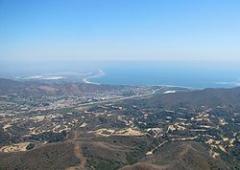

Ventura (officially the City of San Buenaventura; commonly called San Buenaventura before 1891) is the county seat of Ventura County, California, United States, incorporated in 1866. The population was 106,433 at the 2010 census, up from 100,916 at the 2000 census. Ventura is accessible via U.S. Route 101, State Route 33, and State Route 126.


Father JunRpero Serra founded Mission San Buenaventura in 1782, forming the basis of what would become the city. The mission was named for St. Bonaventure, a Thirteenth Century Franciscan saint and a Doctor of the Church. The first mission burned in 1801 and a replacement building of brick and stone was completed in 1809. The bell tower and facade of the new mission was destroyed by an 1812 earthquake. On July 6, 1841, Governor Juan Bautista Alvarado granted Rancho San Miguel to Felipe Lorenzana and Raymundo Olivas, whose Olivas Adobe on the banks of the Santa Clara River was the most magnificent hacienda south of Monterey.
The inhabitants at the time of the arrival of the Spanish in the late 18th Century were a local band of the Chumash tribe (the Mitskanaka). Archaeological research demonstrates that the Chumash have deep roots in central and southern coastal regions of California, and lived here for millennia.
After the American Civil War, settlers came to the area, buying land from the Mexicans, or simply as squatters. Vast holdings were later acquired by Easterners, including the railroad magnate, Thomas Scott. He was impressed by one of the young employees, Thomas R. Bard, who had been in charge of train supplies to Union troops, and Bard was sent west to handle Scott's property.
Not easily accessible, Ventura was not a target of immigrants, and as such, remained quiet and rural. For most of the century which followed the incorporation of Ventura in 1866, it remained isolated from the rest of the state.
Bard is often regarded as the Father of Ventura and his descendants have been prominently identified with the growth of Ventura County. The Union Oil Company was organized with Bard as President in 1890, and has offices in Santa Paula. The large Ventura Oil Field was first drilled in 1919 and at its peak produced 90,000 barrels per day (14,000 m3/d). The city is located between the Ventura River and the Santa Clara River, leading to soil so fertile that citrus grew better here than anywhere else in the state. The citrus farmers formed Sunkist Growers, Incorporated, the world's largest organization of citrus production.
On March 12, 1928, the St. Francis Dam, 54 miles (87 km) inland, failed catastrophically, taking over 600 lives. The resulting flood reached Montalvo about 5:30 a.m., almost two miles (3 km) wide and traveling at a speed of 5 miles (8 km) per hour.
From the south, travel by auto was slow and hazardous, until the completion of a four-lane freeway (US Highway 101) over the Conejo Grade in 1959. This route, now further widened and improved by 1969, is known as the Ventura Freeway, which directly links Ventura with the Los Angeles metropolitan area. Another route, US Highway 101 ALT (now the Pacific Coast Highway) traveled along the coast from Santa Monica via Oxnard, but was not heavily used.
From the north, entrance was by way of a single road along the beach and stagecoach passengers either had to wait until low tide when the horses could cross on the exposed wet sand, or go up the Ventura River Valley and then cross over the mountains to Santa Barbara via Casitas Pass, a long and difficult trip.
Inland, Ventura was hemmed in by (what is now) the Los Padres National Forest, composed of mountainous country and deep canyons. This route became passable with the completion of the Maricopa Highway (Hwy 33) in the 1930s.
Since then, Ventura has grown steadily. In 1920 there were 4,156 people. In 1930 the population had increased to 11,603, by 1950 the population reached 16,643, by 1970 the population was 57,964, and in 1980 the population had increased to 73,774. In the last three decades it has increased to approximately 107,000.
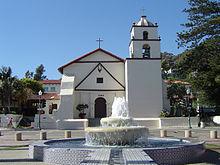
Ventura is famed for the quality and frequency of the surfing conditions at spots such as Surfer's Point at Ventura County Fairgrounds.
Downtown Ventura is home to the Mission San Buenaventura, museums, galleries, dining, and shopping. Primary areas of activity include California Street and Main Street between Ventura Avenue and Fir Street. Located in downtown is the historic Ortega Adobe, once home to the Ortega family, now famous for their chili products. Numerous thrift stores contrast with high-end shops and restaurants. Downtown Ventura is home to Ventura's ornate city hall with its statue of Junipero Serra. Downtown now features numerous restaurants, winebars and the internationally acclaimed Rubicon Theatre Company.
The 4,300-square-foot (400 m2) Ventura Visitors Center, at 101 South California Street, has exhibits on the Heritage Valley, Channel Islands National park, the local arts scene, and maps and brochures about the area.
Downtown's Majestic Ventura Theater is an early 20th-century landmark. A venue for concerts, it has seen performances of bands such as Gregg Allman, John Prine, The Doors, Devo, Van Halen, X, Paramore, Ray Charles, She Wants Revenge, Pennywise, Red Hot Chili Peppers, Lamb of God, Social Distortion, Bad Religion, Thrice, Avenged Sevenfold, Fugazi, Incubus, Tom Petty, America, They Might Be Giants, Panic! at the Disco, and Modest Mouse, as well as local artists such as Army of Freshmen, Big Bad Voodoo Daddy, Gregory Hillman, Bruce Kimmell.
One of the most recognizable landmarks in Ventura is "the Two Trees". These are two lone trees on a hill, visible from most of Ventura.
In Plaza Park (Chestnut and Santa Clara Streets, downtown) stands one of the nation's largest Moreton Bay Fig Trees. Across the street, the main post office has Works Projects Administration murals on interior walls.
The Ventura Harbor has fishing boats, seafood restaurants and a retail center, Ventura Harbor Village. The Channel Islands National Park Headquarters is also located in the harbor, and boats to the Channel Islands depart from there daily.
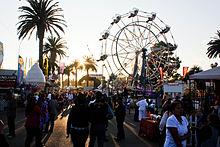
Pierpont Bay (Pierpont) is a residential neighborhood in the one-mile stretch between the Ventura Harbor and San Buenaventura State Beach. Reclaimed marshland was subdivided in 1925 and houses were built in fits of development interrupted by years of economic depression, war, and coastal floods (in 1937 and 1962). Long a hodge-podge of rental dwellings, weekend cottages and vacant lots, it was transformed by successive California real estate booms into a fashionable but eclectic mix of newer large homes and older modest beach cottages, now mostly owner-occupied. Piecemeal development, not overly burdened by planning efforts or regulatory attentions, left Pierpont with widely varying architectural styles, a spotty retail district Seaward Avenue, newer residents' demands for increased municipal maintenance, and continuing disputes about the proper regulation of the neighborhood's public beaches. Recently plans have been announced for high-density development on some streets, and state authorities have begun to more actively manage beaches that were mostly self-regulated for eighty years.
The Ventura County Fairgrounds is the home of the annual Ventura County Fair, and over the years has hosted such acts as Jimi Hendrix, The Grateful Dead, Smokey Robinson, and All American Rejects.
The Derby Club at the Ventura County Fairgrounds offers Horse Racing Live via Satellite, and full service bars and restaurants.
The Ventura County Fairgrounds is also the home of Ventura Raceway, "The best little dirt track in America".
The Ventura County Fairgrounds also serves as a Train Station for Amtrak's Pacific Surfliner route
The Vans Warped Tour also stops yearly at the Ventura County Fairgrounds with line ups including bands such as Yellowcard, Pepper and Avenged Sevenfold.
The Olivas Adobe, one of the early California Rancho homes, is operated today as a museum and performing arts venue. Located adjacent to the Olivas Park Golf Course, the home is one of the most visited historic sites on the central coast. Living history reinactments, demonstrations of Rancho life, and wonderful ghost stories abound. A summer music series of performances held in the old home's courtyard feature an eclectic assortment of artists from blues to jazz to country.
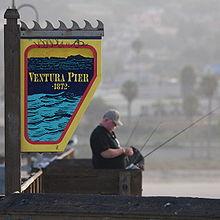
Perry Mason creator Erle Stanley Gardner had a law practice and did much of his early writing in Downtown Ventura. The building where his law offices were housed, at California and Main Street bears his name on a historical marker.
The Ventura Film Festival shows over 200 films each year. The films Swordfish, Little Miss Sunshine, Chinatown, Erin Brockovich, The Aviator, and The Rock were partly filmed in Ventura, and most of the 2011 release Bellflower was shot in Ventura.
The headquarters for outdoor clothing manufacturer Patagonia is located downtown. The eco-designer Stewart+Brown has their factory just a few blocks from the ocean. Chic diaper bag manufacturer Petunia Pickle Bottom is headquartered near downtown Ventura. Ventura is a course in Tony Hawk's Pro Skater 2. It was called 'Skatestreet Ventura'.
Ventura is located northwest of Los Angeles on the California coast and at 34 °16 a²30 a³N 119 °13 a²40 a³W / 34.275 °N 119.22778 °W / 34.275; -119.22778 (34.275242, -119.228048).
According to the United States Census Bureau, Ventura has a total area of 32.1 square miles (83 km2). 21.7 square miles (56 km2) of it is land and 10.4 square miles (27 km2) of it (32.53%) is water.
The Ventura River is at its western boundary and the Santa Clara River at its southern edge.
Ventura has a Mediterranean climate, typical of most coastal Southern California cities, with the sea breeze off the Pacific Ocean moderating temperatures. It is not uncommon for the city to be affected by Santa Ana winds off the Transverse Ranges on occasion, which increase temperatures dramatically.
The 2010 United States Census reported that Ventura had a population of 106,433. The population density was 3,316.2 people per square mile (1,280.4/km ²). The racial makeup of Ventura was 76.6% White, 1.6% African American, 1.2% Native American, 3.4% Asian (0.9% Filipino, 0.6% Chinese, 0.4% Indian, 0.4% Korean, 0.4% Japanese, 0.3% Vietnamese, 0.5% Other), 0.2% Pacific Islander, 5.2% from two or more races. Hispanic or Latino of any race were 31.8% of the population.
The Census reported that 103,940 people (97.7% of the population) lived in households, 755 (0.7%) lived in non-institutionalized group quarters, and 1,738 (1.6%) were institutionalized.
There were 40,438 households, out of which 13,014 (32.2%) had children under the age of 18 living in them, 18,907 (46.8%) were opposite-sex married couples living together, 4,936 (12.2%) had a female householder with no husband present, 2,153 (5.3%) had a male householder with no wife present. There were 2,621 (6.5%) unmarried opposite-sex partnerships, and 371 (0.9%) same-sex married couples or partnerships. 10,959 households (27.1%) were made up of individuals and 4,271 (10.6%) had someone living alone who was 65 years of age or older. The average household size was 2.57. There were 25,996 families (64.3% of all households); the average family size was 3.14.
The population was spread out with 23,918 people (22.5%) under the age of 18, 9,581 people (9.0%) aged 18 to 24, 28,814 people (27.1%) aged 25 to 44, 29,957 people (28.1%) aged 45 to 64, and 14,163 people (13.3%) who were 65 years of age or older. The median age was 39.0 years. For every 100 females there were 97.7 males. For every 100 females age 18 and over, there were 95.6 males.
There were 42,827 housing units at an average density of 1,334.4 per square mile (515.2/km ²), of which 22,600 (55.9%) were owner-occupied, and 17,838 (44.1%) were occupied by renters. The homeowner vacancy rate was 1.3%; the rental vacancy rate was 5.5%. 59,330 people (55.7% of the population) lived in owner-occupied housing units and 44,610 people (41.9%) lived in rental housing units.
As of the census of 2000, there were 100,916 people, 38,524 households, and 25,233 families residing in the city. The population density was 4,790.6 inhabitants per square mile (1,849.3/km ²). There were 39,803 housing units at an average density of 1,889.5 per square mile (729.4/km ²). The racial makeup of the city was 78.8% White, 1.4% African American, 1.2% Native American, 3.0% Asian, 0.2% Pacific Islander, 11.1% from other races, and 4.3% from two or more races. Hispanic or Latino of any race were 30.4% of the population.
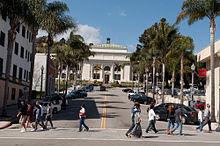
There were 38,524 households out of which 32.1% had children under the age of 18 living with them, 49.2% were married couples living together, 11.7% had a female householder with no husband present, and 34.5% were non-families. 26.5% of all households were made up of individuals and 9.7% had someone living alone who was 65 years of age or older. The average household size was 2.56 and the average family size was 3.12.
In the city the population was spread out with 25.0% under the age of 18, 7.8% from 18 to 24, 31.5% from 25 to 44, 22.8% from 45 to 64, and 12.8% who were 65 years of age or older. The median age was 37 years. For every 100 females there were 96.9 males. For every 100 females age 18 and over, there were 93.8 males.
The median income for a household in the city was $52,297, and the median income for a family was $60,466. Males had a median income of $43,828 versus $31,793 for females. The per capita income for the city was $25,065. About 6.4% of families and 9.0% of the population were below the poverty line, including 12.2% of those under age 18 and 5.3% of those age 65 or over.
The major road through Ventura is the Ventura Freeway (U.S. Route 101), connecting the California Central Coast and San Francisco to the north, and Los Angeles to the south. State Route 33, the Ojai Freeway, heads north to Ojai. State Route 126 and State Route 118 head east to Santa Clarita and Simi Valley, respectively.
The East Ventura Station serves as the western terminus of the Ventura County Line of the Metrolink commuter rail system, which extends to Los Angeles' Union Station. The Ventura Amtrak Station is served by Amtrak's Pacific Surfliner from San Luis Obispo to San Diego. Local bus services is provided by Gold Coast Transit and Ventura Intercity Service Transit Authority.
Ventura hosts five college campuses, the Brooks Institute of Photography, Ventura College of Law, Southern California Institute of Law, Santa Barbara Business College and Ventura College. Ventura College is a community college, part of the Ventura County Community College District . The Ventura College of Law is a non-profit law school founded in 1969.
Public school students from kindergarten through 12th grade attend schools in the Ventura Unified School District. The district has two high schools: Ventura High in the midtown area, and Buena High in east Ventura. Students from throughout the district may attend Foothill Technology High School, a magnet school focusing on technology and health careers or El Camino High School (Ventura), an independent study school located on the Ventura College campus. Private schools include St. Bonaventure High School, a Catholic school, Ventura County Christian School, an evangelical Christian school, and Holy Cross School, Sacred Heart, and Our Lady of the Assumption, Roman Catholic schools for grades Pre-K-8.
Patagonia is based in Ventura.
According to the City's 2009 Comprehensive Annual Financial Report, the top employers in the city are:
In 2009 the City of Ventura created Ventura Ventures Technology Center, a business incubator with a high-tech focus. Ventura Ventures Technology Center was created as an economic engine to develop jobs and companies locally, as well as attract entrepreneurs to the area.
Public Libraries: Ventura County Library - There are three branches in the City of Ventura: E.P. Foster Library on Main Street, Avenue Library on the Avenue, and Saticoy Library in the unincorporated area of Saticoy. H.P. Wright Library was closed on November 30, 2009 due to lack of funding. All books from the H.P. Wright Library were integrated into the E.P. Foster Library in March 2010.
Academic Library: Ventura College
Other: Ventura County Law Library
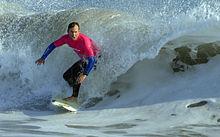
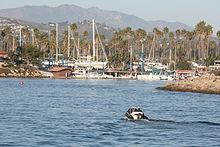

Word Count: 3490






